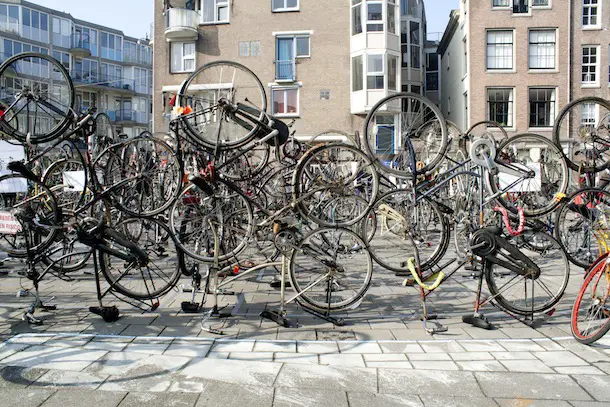It’s generally agreed that walkable streets, neighbourhoods and cities are a good thing. Walkable areas produce a whole range of benefits that include:
- less obesity and healthier residents;
- boosting property values and the economy;
- fewer traffic accidents;
- reduced CO2 emissions;
- and maybe even more people walking!
But perhaps a harder question is: How do we know if a street or area is walkable? Is it just about how many different destinations are within walking distance of any particular spot? While that’s a really important factor, it’s obviously not the only one.
What about other factors like being able to cross the street easily, feeling safe from crime and the steepness of hills? Research has found that these issues also have a big impact on what makes a street walkable and gets more people walking.
Digging deeper into walkability 
Now a new web app at Walkonomics.com has been developed that rates street walkability using several new factors. Each street is rated in the following eight categories:
- Road safety;
- Easy to cross;
- Pavement/Sidewalk quality;
- Hilliness;
- Navigation;
- Fear of crime;
- Smart & beautiful;
- Fun & relaxing.
These are combined into an overall 5 star rating and plotted on a Google map using colour-coded markers.
Using Crowdsourcing and Open Data
In order to do this Walkonomics has combined the two emerging web-trends of ‘Crowdsourcing’ and ‘Open Data’. Many national governments have recently embraced the concept of ‘Open Data’ and released thousands of datasets for public use, many of which relate to streets and cities. Walkonomics has spatially analysed this data and used it to automatically rate each streets walkability. So far these automated ratings cover every street in England (over 600,000 streets) and New York City in the US.
Data on street width, crime, gradients and traffic levels have all been used to calculate the scores. The process even included counting the number of trees on every street in New York!
This initial set of automatic ratings provide a strong, objective basis for the walkability map. However, as with any automated process, these ratings are likely to contain some errors and cannot truely replicate a human review. The best way to find out an areas walkability is to ask someone who’s actually walked those streets.
In order to do this, Walkonomics uses ‘Crowdsourcing’ to allow local people to add their own ratings to each street. Each persons rating contributes to the streets overall score, so as more and more streets are rated, any errors are cancelled out. It is hoped that eventually the entire system will become self-organising like other ‘Crowdsourcing’ projects Wikipedia and OpenStreetMap.
Making streets more walkable
This new web-app has the potential to provide much more detailed walkability ratings that include the things that really matter. But even more exciting is the possibility of improving streets for pedestrians; as each review allows people to suggest ways of improving the street. In this way the website provides a new space for local communities and government to discuss the problems and develop solutions for making streets more walkable. More and more streets and cities are being added, so get involved: check out your street and add your own rating.
Photo: Yogurt Yogurt


